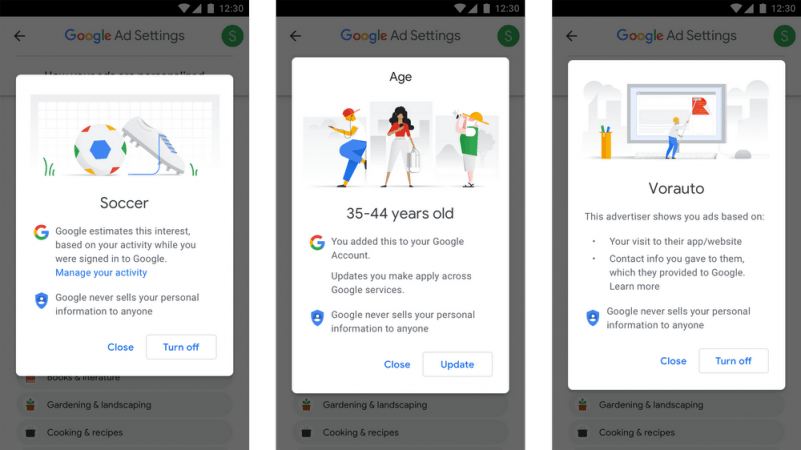Google is clearly the Goliath of internet search and no other web search engine comes even close. This has allowed the company to make billions through advertisements, $95.4 billion to be precise last year, and targeted ads or personalised ads play a vital role in it.
Serving the right ads to the internet users is better than having to see random and irrelevant ads. Google's practice of targeted marketing came under fire in the European Union, but not to the extent of its chief rival Facebook. With great power comes great responsibility, hence Google is giving its precious users the superpower to control ads on the largest internet search platform.
"The new Ad Settings and updates to Why this ad? provide you with more transparency and control over your Google ad experience than ever before. With these improvements, you can browse the web confidently knowing that you have the information and control to make Google work better for you," Google's product manager Philippe de Lurand Pierre-Paul said in an official blog post.
How to turn off personalised ads on Google?
Go to Google's updated Ad Settings page
You'll find different topics and categories that Google uses to serve you ads

Click on individual topics and select "turn off"
Users can turn off personalised ads for all categories at once with the main toggle switch at the top of the Ad Settings page

What do the new changes in Ad Settings mean?
Google's new Ad Settings are an extension to the "Why this ad?" and "Mute this ad" features that were introduced in 2011 and 2012, respectively. With the new feature, users will be able to see all the ads that are tailored to users in one place. Clicking on different factors will allow users to see ads related to those topics and remove them if users wish.
When a user is signed into the Google account and watched highlights a soccer game on YouTube or searched "soccer fields near me," Google will register this as your interest and suggest an ad for a pair of soccer shorts and such. Similarly, if you've given your age to Google, it'll show relevant ads like suggesting student study abroad programs for teens.
These topic cards help Google make ads relevant for users, but if you find them invasive then there's an option to turn it off.

"Turning off a factor means you'll no longer receive tailored ads related to it across our services, and on websites and apps that partner with us to show ads, as long as you're signed in to your Google Account. The ads you see can still be based on general factors, like the subject of what you're looking at or the time of day, or any other factor that is still turned on," Google explained.
According to Google data, people muted five billion ads online last year and this new feature grants more control over the ads shown online on both mobile devices and desktops. Google dominance in the online ad space gives the web giant the liberty to make changes, even if it means temporarily cornering the marketers.
While this move by Google may appear as affecting the revenue generated through Ad Sales, Brad Bender, the vice president who runs Google's display ads business, said the features will help marketers understand what ads people like and hate.

















